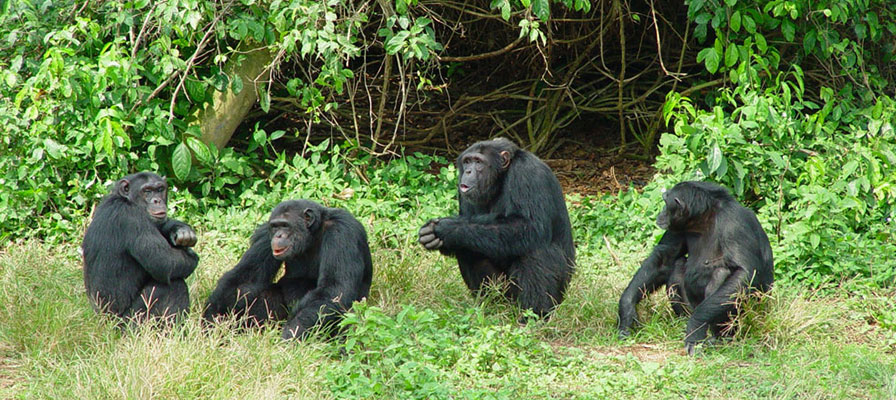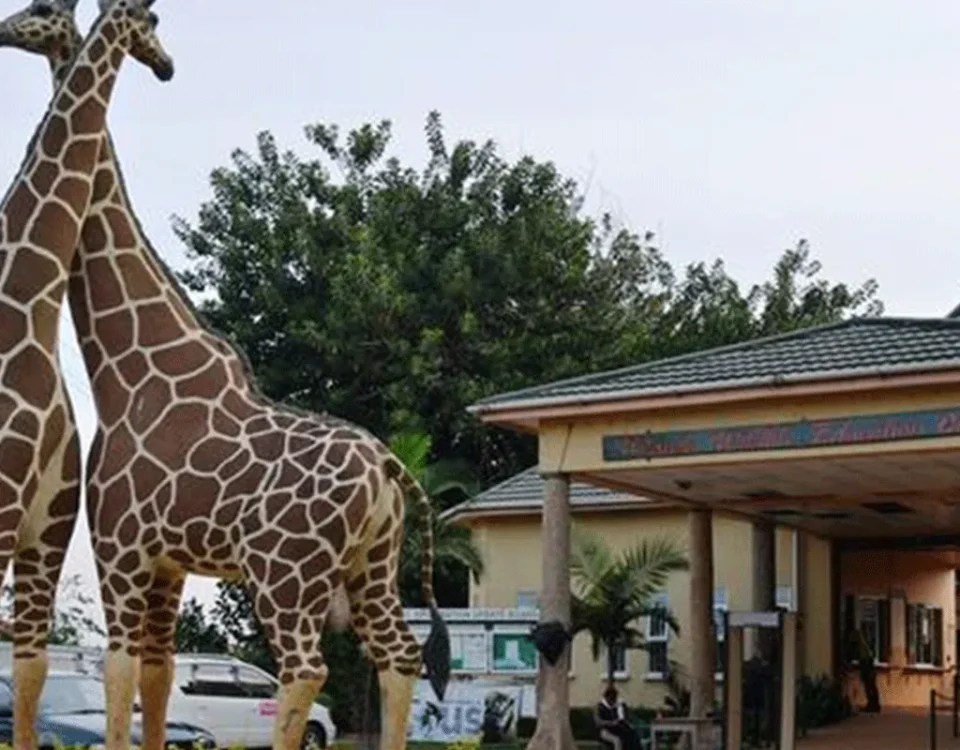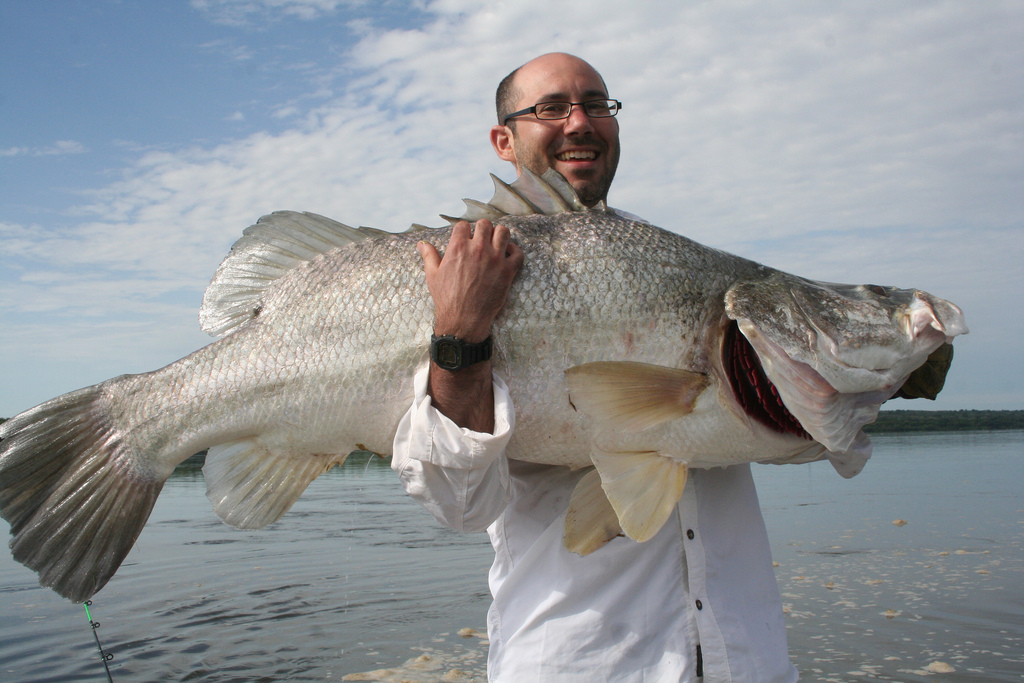
Sport Fishing in Murchison Falls National Park
May 1, 2023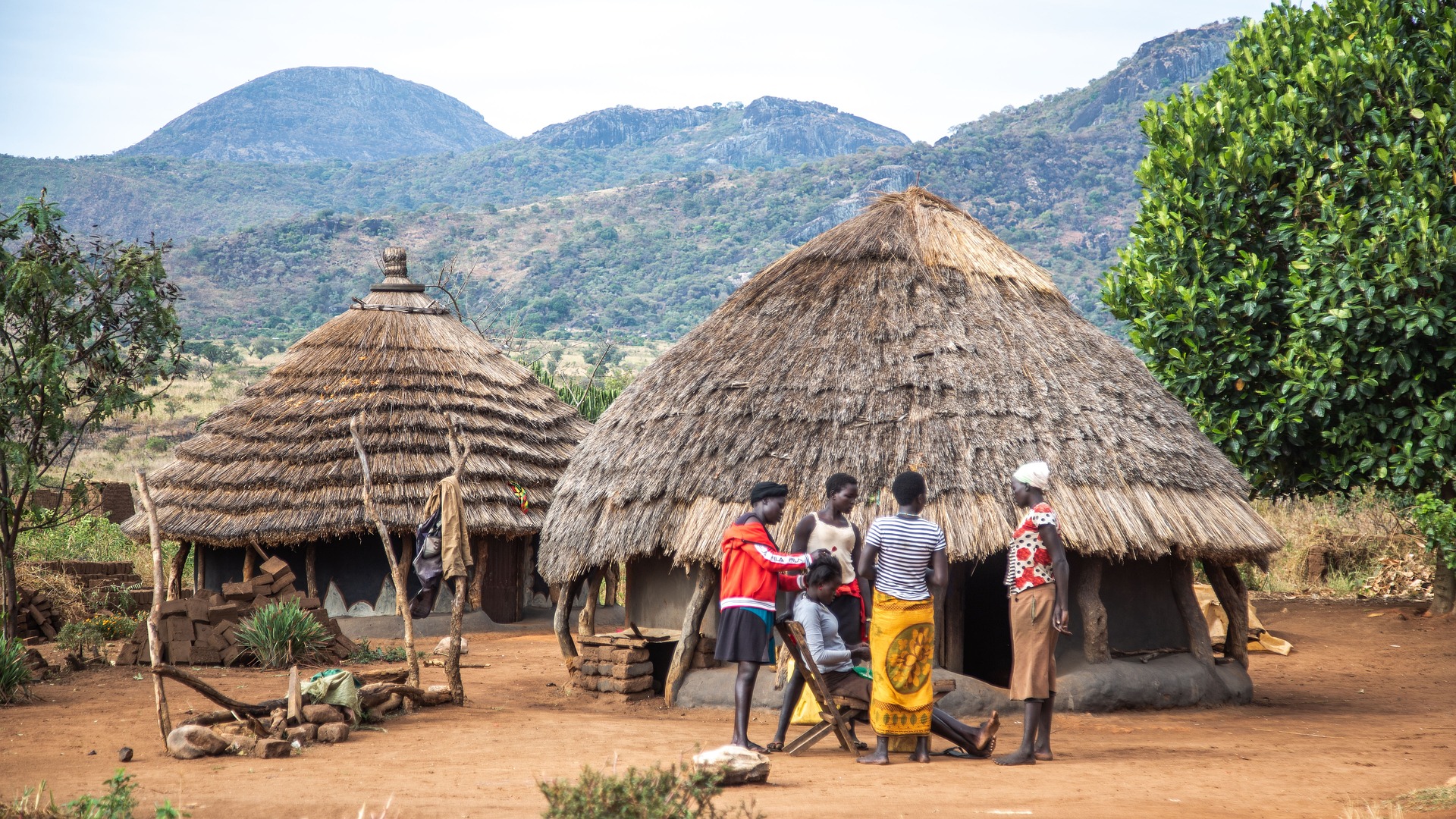
Uganda Cultural Tours
May 24, 2023Kibale Forest National Park. Chimpanzee Tracking Adventures in Uganda
Kibale Forest National Park is a protected area located in western Uganda. It is one of the most popular national parks in the country, known for its diverse wildlife and lush tropical rainforest.
Location
Kibale Forest National Park is situated in the western part of Uganda, covering an area of about 795 square kilometres (307 square miles). It is located approximately 35 kilometres (22 miles) southeast of Fort Portal town.
Biodiversity
The park is renowned for its incredible biodiversity. It is home to an estimated 13 species of primates, making it one of the best places in Africa for primate tracking and research. The most famous primate species found in Kibale Forest is the chimpanzee, with over 1,500 individuals living in the park. Other primates include red colobus monkeys, black-and-white colobus monkeys, blue monkeys, grey-cheeked mangabeys, and more.
Birdlife
Kibale Forest National Park is a paradise for birdwatchers, hosting over 375 species of birds. Some of the notable bird species include the African grey parrot, great blue turaco, black bee-eater, African pitta, and yellow-rumped tinkerbird. Bird enthusiasts can enjoy guided birding walks and nature trails to observe the diverse avian life.
Chimpanzee Tracking
One of the main attractions in Kibale Forest is chimpanzee tracking. Visitors have the opportunity to join guided treks to observe these intelligent primates in their natural habitat. The treks usually start in the early morning, and visitors can witness the chimps’ behaviours, interactions, and feeding habits.
Forest Walks and Nature Trails
Kibale Forest offers various walking trails that allow visitors to explore the rich ecosystem and diverse flora and fauna. The forest walks are an excellent way to experience the park’s beauty, encounter different monkey species, and learn about the local plant life.
Bigodi Wetland Sanctuary
Adjacent to Kibale Forest National Park is the Bigodi Wetland Sanctuary, which is managed by the local community. This sanctuary offers guided walks through the wetland, providing an opportunity to spot numerous bird species, primates, and other wildlife.
Accommodation
There are several lodges and campsites available in and around Kibale Forest National Park, ranging from budget to luxury options. These accommodations offer a comfortable stay and provide easy access to the park’s activities and attractions.
Kibale Forest National Park is an important conservation area in Uganda, known for its remarkable biodiversity and primate populations. It offers visitors an unforgettable experience of exploring a tropical rainforest and observing fascinating wildlife in their natural habitat.
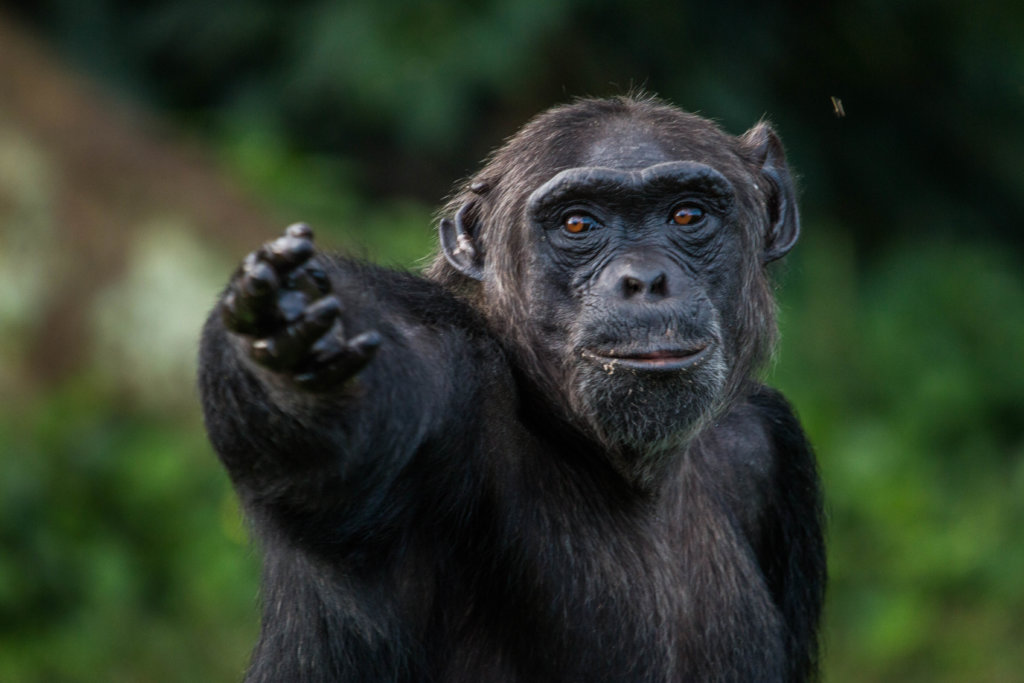
Go Chimpanzee Tracking in Uganda
Chimpanzee Tracking in Kibale Forest National Park
Chimpanzee tracking in Kibale Forest National Park is a popular activity that allows visitors to observe and interact with chimpanzees in their natural habitat. Here’s some information about chimpanzee tracking in Kibale Forest National Park:
Chimpanzee Habituation Experience (CHEX)
Kibale Forest National Park offers both regular chimpanzee tracking and a unique Chimpanzee Habituation Experience. The CHEX is a full-day activity where visitors join researchers and conservationists in the process of habituating wild chimpanzees. This immersive experience provides a deeper understanding of chimpanzee behaviour and allows for more extended and intimate encounters with the primates.
Tracking Chimpanzees
For regular chimpanzee tracking, visitors are usually divided into small groups and accompanied by experienced guides and trackers. The treks typically start early in the morning and can last a few hours, depending on the location and movement of the chimpanzee groups. The guides are knowledgeable about the chimpanzees’ habits and can interpret their behaviour and vocalizations to enhance the tracking experience.
Observation and Photography
During the chimpanzee tracking experience, visitors have the opportunity to observe and photograph the chimpanzees from a close distance. It’s important to follow the guidelines provided by the park authorities to ensure the safety and well-being of both visitors and the chimpanzees. Flash photography is not allowed, as it can disturb the animals.
Other Wildlife Encounters
While chimpanzee tracking is the main highlight, Kibale Forest National Park is also home to various other primate species, birds, and mammals. During the trek, visitors might come across red colobus monkeys, black-and-white colobus monkeys, blue monkeys, grey-cheeked mangabeys, and several bird species. The guides often share interesting information about the park’s wildlife and ecosystems.
Preparations and Requirements
Before embarking on a chimpanzee tracking experience, visitors should wear appropriate attire such as long trousers, sturdy hiking shoes, and a hat. It is advisable to carry insect repellent, sunscreen, and sufficient water for hydration during the trek. Visitors should also be reasonably fit, as the terrain can be challenging at times.
Conservation and Sustainability
Kibale Forest National Park and its chimpanzee population are protected and managed for conservation purposes. Visitors are expected to adhere to the park’s guidelines and regulations, including maintaining a respectful distance from the chimpanzees and not littering in the forest. These practices ensure the long-term sustainability of chimpanzee tourism and the overall well-being of the park’s ecosystem.
Chimpanzee tracking in Kibale Forest National Park provides an incredible opportunity to witness the behaviour of these intelligent primates up close. It’s a thrilling and educational experience that allows visitors to appreciate the importance of conservation efforts and the remarkable biodiversity of the park.
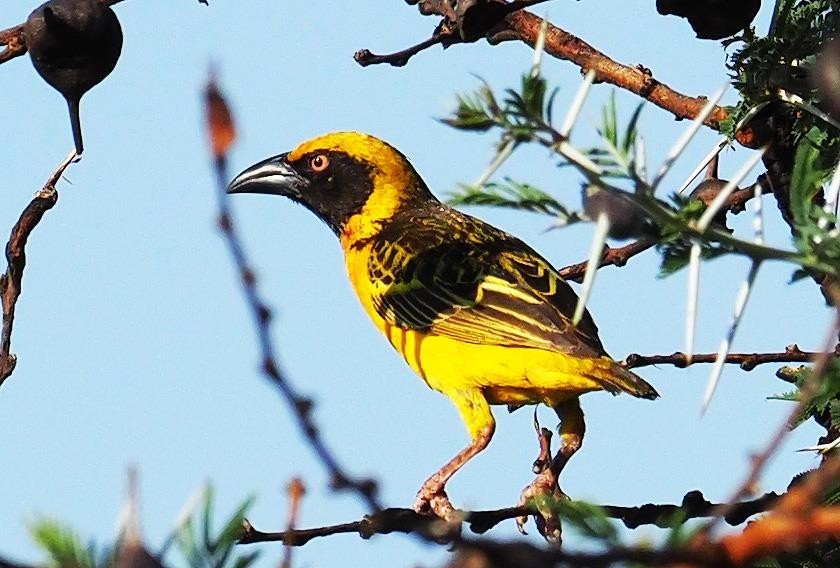
Uganda Birding Safari
About Bigodi Wetland Sanctuary in Kibale Forest National Park
The Bigodi Wetland Sanctuary is a community-based nature reserve located adjacent to Kibale Forest National Park in western Uganda. Here’s some information about the Bigodi Wetland Sanctuary:
Location
The Bigodi Wetland Sanctuary is situated approximately 6 kilometres (3.7 miles) south of the Kibale Forest National Park visitor centre. It covers an area of about 4.5 square kilometres (1.7 square miles).
Community Management
The Bigodi Wetland Sanctuary is managed by the local community, specifically the Kibale Association for Rural and Environmental Development (KAFRED). The sanctuary was established in 1992 as a conservation initiative led by the community to protect the wetland ecosystem and promote sustainable tourism.
Wetland Ecosystem
The sanctuary is primarily composed of a diverse wetland ecosystem that includes a swamp, papyrus beds, and various small lakes. The wetland is surrounded by a mix of grassland, woodland, and agricultural areas. It serves as an important habitat for numerous bird species, primates, mammals, reptiles, and amphibians.
Birdwatching
Bigodi Wetland Sanctuary is renowned for its rich birdlife. It is home to over 200 bird species, including the Great Blue Turaco, Papyrus Gonolek, White-winged Warbler, and White-collared Oliveback. Guided birdwatching walks are available, allowing visitors to observe and learn about the different bird species within the wetland.
Primate Species
The sanctuary also hosts a variety of primate species, including red colobus monkeys, black-and-white colobus monkeys, grey-cheeked mangabeys, and L’Hoest’s monkeys. Visitors have the opportunity to encounter these primates during walks within the sanctuary.
Guided Nature Walks
Guided nature walks are the main activity offered at the Bigodi Wetland Sanctuary. Knowledgeable local guides lead visitors through the wetland, providing insights into the ecosystem, pointing out wildlife sightings, and sharing information about the local flora and fauna. The walks offer a peaceful and immersive experience in the wetland environment.
Community Interaction
A visit to the Bigodi Wetland Sanctuary also provides an opportunity to interact with the local community. The sanctuary’s management model ensures that a portion of the revenue generated from tourism goes back to the community for development projects, education initiatives, and healthcare improvements.
Sustainability and Conservation
The Bigodi Wetland Sanctuary serves as a successful example of community-led conservation and sustainable tourism. Involving the local community in the management and benefits of the sanctuary contributes to the preservation of the wetland ecosystem and supports the livelihoods of the people living in the area.
The Bigodi Wetland Sanctuary is a beautiful and ecologically important area near Kibale Forest National Park. It offers visitors a chance to explore a unique wetland environment, encounter diverse wildlife, and engage with the local community in a sustainable and responsible manner.
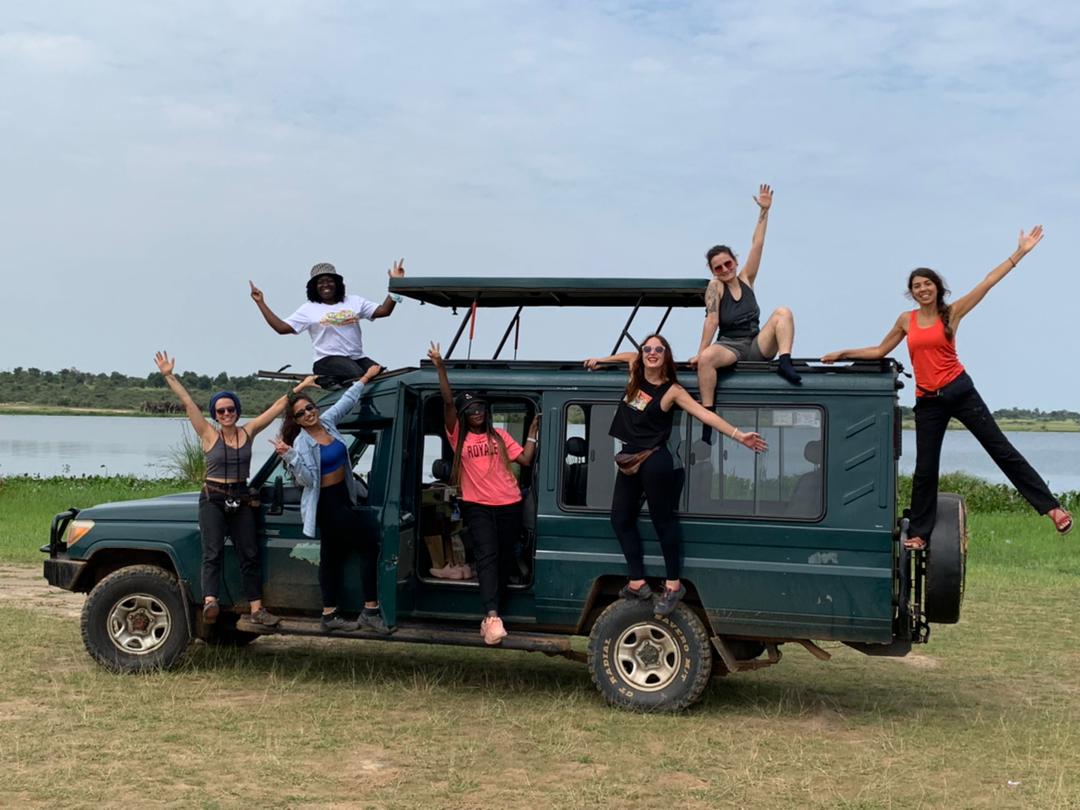
Road trip to Chimpanzee Tracking Trail
Uganda Birding Safaris to Kibale Forest National Park
Uganda birding safaris to Kibale Forest National Park offer bird enthusiasts a wonderful opportunity to explore the rich avian diversity of the park. Here’s some information about birding safaris in Kibale Forest National Park:
Bird Species
Kibale Forest National Park is home to over 375 species of birds, making it a paradise for birdwatchers. The park’s varied habitats, including the rainforest, wetlands, and grasslands, support a wide range of bird species. Notable bird species found in Kibale Forest include the African grey parrot, great blue turaco, black bee-eater, African pitta, yellow-rumped tinkerbird, and many others.
Birding Guides
It is recommended to hire experienced birding guides who are knowledgeable about the bird species and their habitats within Kibale Forest. These guides can identify and locate the different bird species, mimic bird calls, and provide valuable insights into their behaviours and ecological significance.
Birding Routes and Trails
Kibale Forest National Park offers various birding routes and trails that cater to different birding preferences. The Bigodi Wetland Sanctuary, located adjacent to the park, is a prime birding spot with its papyrus beds and wetland habitats. Other trails within the park take you deeper into the forest, allowing for sightings of both forest-dwelling and canopy species.
Chimpanzee Tracking and Birding Combination
Kibale Forest is famous for its chimpanzee tracking, and combining this activity with birding can make for an enriching experience. While tracking the chimpanzees, you can also spot numerous bird species along the way and enjoy the diverse sounds and sights of the forest.
Timing and Seasons
The best time for birding in Kibale Forest National Park is during the dry seasons, which are from December to February and from June to July. During these months, the trails are more accessible, and bird activity is generally higher. However, birding can be enjoyed throughout the year, and each season brings its own unique bird species and behaviours.
Conservation and Responsible Birding: It’s important to engage in responsible birding practices during your safari. This includes respecting the park’s rules and regulations, maintaining a respectful distance from the birds, and refraining from disturbing their natural behaviours. Responsible birding contributes to the conservation efforts of the park and ensures a sustainable future for the avian species.
Uganda birding safaris to Kibale Forest National Park provide an incredible opportunity to witness a diverse array of bird species in their natural habitat. With the guidance of experienced birding guides and the stunning backdrop of the rainforest, birdwatchers can enjoy an unforgettable birding experience in this beautiful national park.

Tubale Safaris Uganda
When to Visit Kibale Forest National Park?
The best time to visit Kibale Forest National Park in Uganda depends on personal preferences and specific activities. However, here is some information to help you plan your visit:
Dry Seasons
The dry seasons are generally considered the best time to visit Kibale Forest National Park. The first dry season runs from December to February, and the second dry season occurs from June to July. During these periods, the weather is relatively dry, and trails are more accessible. Birding and wildlife viewing is typically excellent during the dry seasons.
Rainy Seasons
Kibale Forest National Park experiences two rainy seasons. The first rainy season is from March to May, and the second rainy season is from August to November. The park receives substantial rainfall during these periods, which can make trails muddy and harder to navigate. However, the rainforests are lush and vibrant, and some bird species may be more active during this time.
Chimpanzee Tracking
Chimpanzee tracking is one of the main attractions in Kibale National Park. It can be done year-round, but the dry seasons (December to February and June to July) are generally preferred for better trail conditions and increased chances of encountering chimpanzees. During the rainy seasons, the trails may be more challenging due to mud and vegetation growth.
Birdwatching
Kibale Forest National Park is a fantastic destination for birdwatching. The bird species are present throughout the year, but birding can be especially rewarding during the dry seasons (December to February and June to July). During these periods, many migratory bird species are present, and the clearer weather makes bird sightings and photography more favourable.
Primate Viewing
Kibale Forest is known for its diverse primate population, including chimpanzees, red colobus monkeys, black-and-white colobus monkeys, and others. Primate viewing can be enjoyed throughout the year. However, the dry seasons may offer better chances of observing primates as they tend to move around more in search of food during this time.
Visitor Numbers
The high tourist season in Uganda generally coincides with the dry seasons, especially the months of December and January. If you prefer fewer crowds, you might consider visiting during the shoulder months just before or after the peak season.
It’s important to note that weather patterns can vary, and it’s always advisable to check the current weather forecast and road conditions before your visit. Regardless of the season, Kibale Forest National Park offers unique and captivating experiences for wildlife enthusiasts, primate lovers, and birdwatchers.
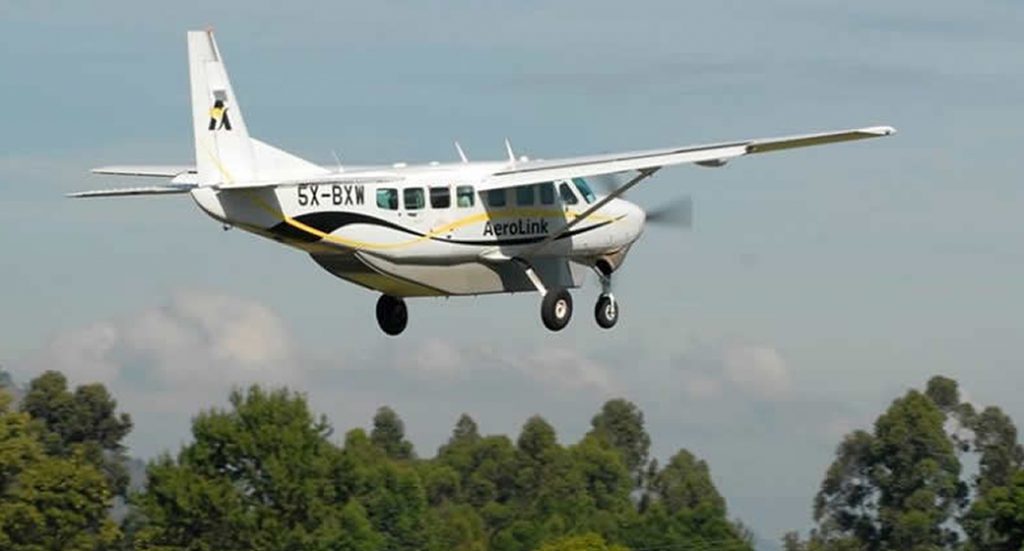
Kibale Flying Safari
How to Get to Kibale Forest National Park?
To get to Kibale Forest National Park in Uganda, you have a few transportation options. Here are the common ways to reach the park:
By Air
The nearest major airport to Kibale National Park is Entebbe International Airport, located near the capital city, Kampala. From Entebbe, you can take a domestic flight to Kasese Airstrip, which is the closest airstrip to the park. Several domestic airlines offer flights between Entebbe and Kasese. From Kasese, you can arrange ground transportation to Kibale Forest National Park.
By Road
Most visitors to Kibale National Park reach the park by road. Here are a few routes commonly used:
-
- From Kampala: The most common route is to drive from Kampala to Fort Portal, the nearest major town to the park. The distance is approximately 320 kilometres (200 miles), and the journey takes about 4-5 hours, depending on traffic and road conditions. From Fort Portal, it’s a short drive to the park’s entrance.
- From Queen Elizabeth National Park: If you are visiting Queen Elizabeth National Park, you can reach Kibale Forest National Park by road. The distance between the two parks is approximately 85 kilometres (53 miles), and the drive takes about 2-3 hours.
- From other destinations: Depending on your starting point in Uganda, you can plan your route to Fort Portal and then proceed to Kibale Forest National Park. It’s advisable to use a reliable map or GPS navigation system and consider the road conditions, especially during the rainy season.
Public Transportation
Public buses and minibuses (known as matatus) operate between major towns and cities in Uganda. You can take a bus or matatu from Kampala to Fort Portal, and from there, hire a taxi or motorcycle (boda-boda) to reach Kibale Forest National Park. Public transportation may be more time-consuming and less comfortable compared to private transport options.
Once you arrive at Kibale National Park, the park authorities or your accommodation provider can assist you with further transportation arrangements, including transfers and guided tours within the park.
It’s recommended to plan your transportation in advance and check road conditions, especially during the rainy season when some routes may become more challenging.
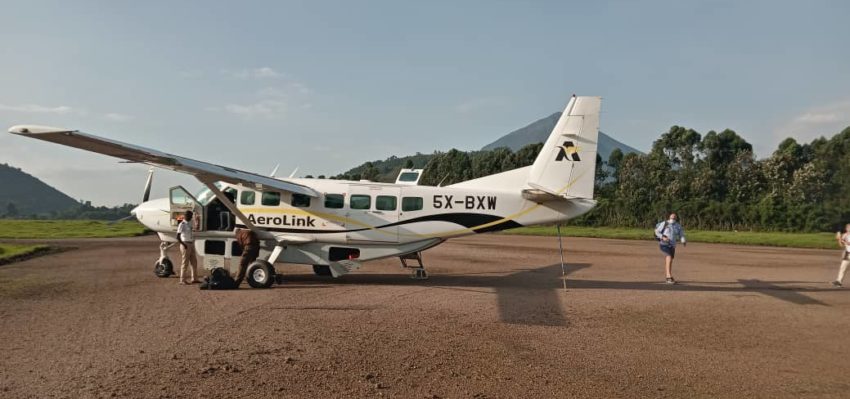
Kibale Flying Safari
Where to Stay in Kibale Forest National Park?
Kibale Forest National Park offers a range of accommodation options to suit different budgets and preferences. Here are some places to stay within or near Kibale Forest National Park:
Lodges and Camps within the Park:
- Primate Lodge Kibale: This lodge offers comfortable cottages and luxury safari tents nestled within the forest. It provides close proximity to the park entrance and offers various amenities and services.
- Kibale Forest Camp: Located just outside the park, this camp offers self-contained safari tents and cottages. It provides a relaxed atmosphere and beautiful views of the forest.
- Chimpanzee Forest Guesthouse: Situated near the park entrance, this guesthouse offers simple yet comfortable rooms. It is known for its friendly staff and convenient location.
Lodges and Camps near the Park:
- Ndali Lodge: Located near the park, this luxury lodge offers stunning views of the Rwenzori Mountains and Lake Nyinambuga. It provides spacious cottages and exceptional service.
- Isunga Lodge: Situated in the nearby village of Bigodi, Isunga Lodge offers comfortable accommodations and a peaceful setting. It is known for its eco-friendly practices and community involvement.
- Papaya Lake Lodge: This lodge is situated on a crater lake near Kibale Forest National Park. It offers charming cottages and a tranquil atmosphere.
Budget and Mid-range Accommodations:
- Rweteera Safari Park: Located near the park, this budget-friendly lodge provides comfortable rooms, camping options, and basic facilities.
- Turaco Treetops: Situated just outside the park, this mid-range lodge offers spacious rooms and an elevated location that provides panoramic views of the forest.
It is recommended to make advance reservations for accommodation, especially during the peak tourist season, to ensure availability. Each accommodation option offers unique features and amenities, so it’s advisable to research and choose the one that best suits your needs and preferences.
Additionally, some accommodations may offer guided activities and services, such as chimpanzee tracking, birding walks, and cultural experiences, which can enhance your overall experience in Kibale National Park.

